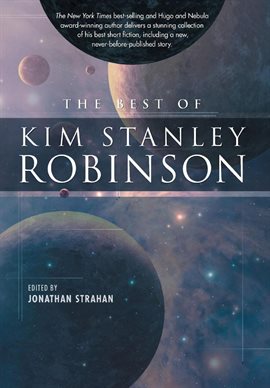



But he’s not afraid to get weird: He writes short chapters from the point of view of a carbon molecule, a photon, and a caribou. He pays a lot of attention to how money moves around in a carbon-based economy, and may understand the financial underpinnings of the climate crisis better than any writer I’ve encountered. In the novel’s 106 chapters, he riffs on blockchain technology, Jevon’s Paradox, carbon taxes, ice sheet dynamics, quantitative easing, among other things. Robinson has a geeky, exuberant imagination and likes to pick up pieces of the world and examine them like a geologist examines rocks. It’s a trip through the carbon-fueled chaos of the coming decades, with engineers working desperately to stop melting glaciers from sliding into the sea, avenging eco-terrorists downing so many airliners that people are afraid to fly, and bankers re-inventing the economy in real time in a desperate attempt to avert extinction. Who knew that in this dark hour of the climate crisis hope would arrive in the form of a 563-page novel by a sci-fi writer best known for a trilogy about establishing a human civilization on Mars? But alas, that’s what Kim Stanley Robinson – the author of 20 books and one of the most respected science fiction writers working today - has given us with The Ministry for the Future.


 0 kommentar(er)
0 kommentar(er)
